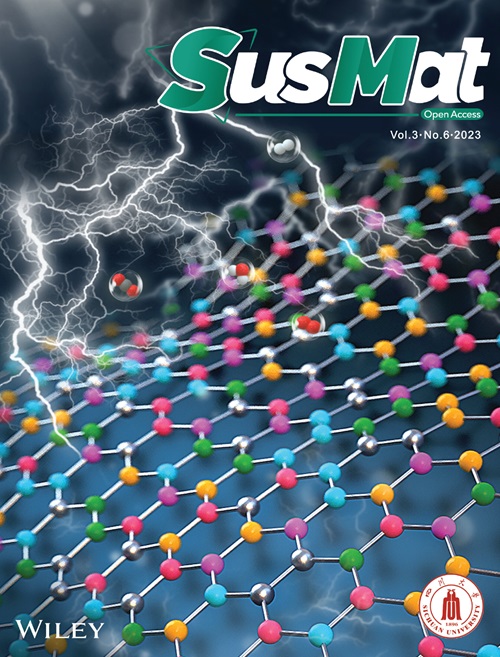Toward effective electrocatalytic C–N coupling for the synthesis of organic nitrogenous compounds using CO2 and biomass as carbon sources
IF 18.7
1区 材料科学
Q1 CHEMISTRY, MULTIDISCIPLINARY
引用次数: 1
Abstract
Thermochemical conversion of fossil resources into fuels, chemicals, and materials has rapidly increased atmospheric CO2 levels, hindering global efforts toward achieving carbon neutrality. With the increasing push for sustainability, utilizing electrochemical technology to transform CO2 or biomass into value‐added chemicals and to close the carbon cycle with sustainable energy sources represents a promising strategy. Expanding the scope of electrosynthesis technology is a prerequisite for the electrification of chemical manufacturing. To this end, constructing the C─N bond is considered a priority. However, a systematic review of electrocatalytic processes toward building C─N bonds using CO2 and biomass as carbon sources is not available. Accordingly, this review highlights the research progress in the electrosynthesis of organic nitrogen compounds from CO2 and biomass by C─N coupling reactions in view of catalytic materials, focusing on the enlightenment of traditional catalysis on C─N coupling and the understanding of the basis of electrochemical C─N coupling. The possibility of C─N bond in electrocatalysis is also examined from the standpoints of activation of substrates, coupling site, mechanism, and inhibition of hydrogen evolution reaction (HER). Finally, the challenges and prospects of electrocatalytic C─N coupling reactions with improved efficiency and selectivity for future development are discussed.利用二氧化碳和生物质作为碳源,实现有效的电催化 C-N 偶联以合成有机含氮化合物
将化石资源转化为燃料、化学品和材料的热化学过程迅速增加了大气中的二氧化碳含量,阻碍了全球实现碳中和的努力。随着可持续发展的日益推进,利用电化学技术将二氧化碳或生物质转化为高附加值的化学品,并通过可持续能源实现碳循环,是一项大有可为的战略。扩大电合成技术的范围是实现化工生产电气化的先决条件。为此,构建 C-N 键被认为是当务之急。然而,以二氧化碳和生物质为碳源构建 C─N 键的电催化过程尚无系统综述。因此,本综述从催化材料的角度出发,重点介绍了利用 C─N 偶联反应从 CO2 和生物质电合成有机氮化合物的研究进展,着重阐述了传统催化对 C─N 偶联的启示以及对电化学 C─N 偶联基础的理解。此外,还从底物活化、耦合位点、机理和氢进化反应(HER)抑制等角度探讨了 C─N 键在电催化中的可能性。最后,讨论了提高效率和选择性的电催化 C─N 偶联反应的挑战和未来发展前景。
本文章由计算机程序翻译,如有差异,请以英文原文为准。
求助全文
约1分钟内获得全文
求助全文
来源期刊
自引率
4.20%
发文量
0
期刊介绍:
SusMat aims to publish interdisciplinary and balanced research on sustainable development in various areas including materials science, engineering, chemistry, physics, and ecology. The journal focuses on sustainable materials and their impact on energy and the environment. The topics covered include environment-friendly materials, green catalysis, clean energy, and waste treatment and management. The readership includes materials scientists, engineers, chemists, physicists, energy and environment researchers, and policy makers. The journal is indexed in CAS, Current Contents, DOAJ, Science Citation Index Expanded, and Web of Science. The journal highly values innovative multidisciplinary research with wide impact.

 求助内容:
求助内容: 应助结果提醒方式:
应助结果提醒方式:


